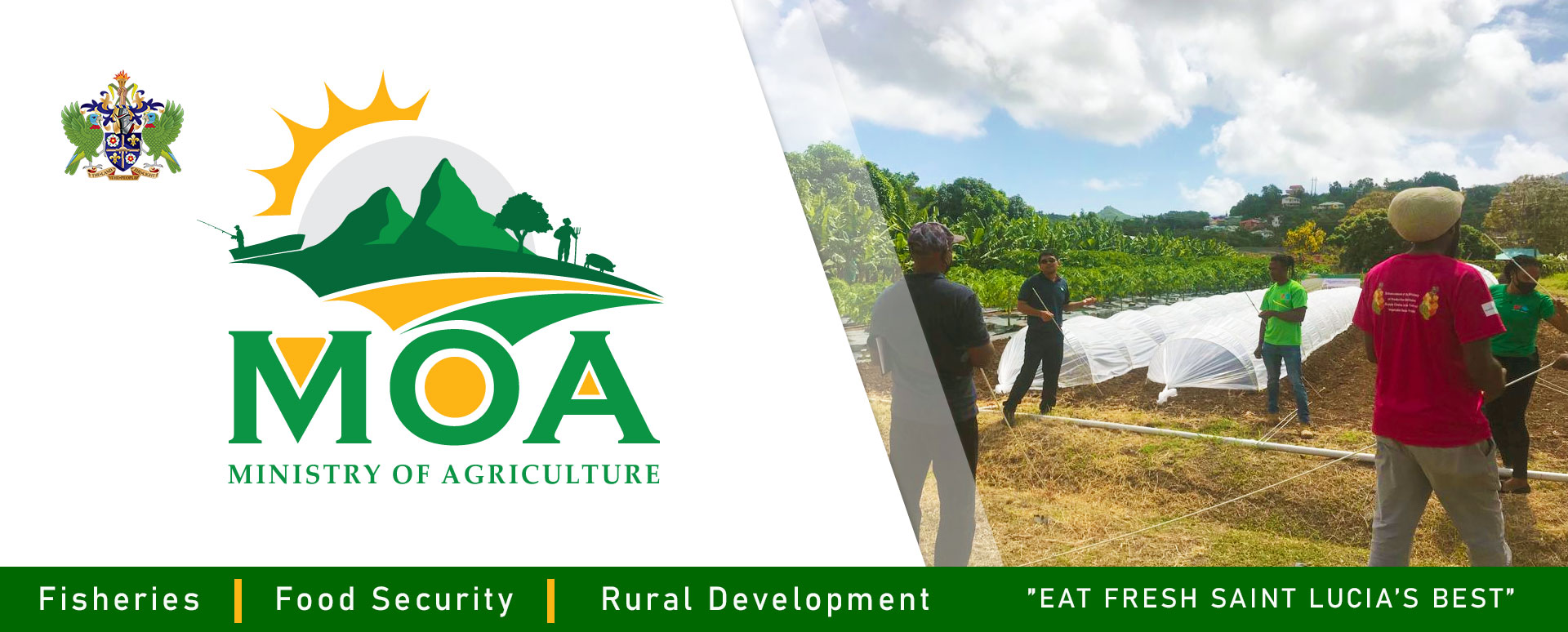
Sargassum Accumulation Along Saint Lucia Coastline
May 12, 2025
As sargassum seaweed once again carpets Saint Lucia’s coastline, the Department of Fisheries is urging calm and preparedness, not panic. With the seasonal influx posing both challenges and opportunities.
As the seasonal arrival of Sargassum seaweed continues to shape coastal activity, the Department of Fisheries is assuring the public that measured steps are already in motion to manage the Sargassum season efficiently and support those whose livelihoods are most affected.
Deputy Chief Fisheries Officer, Thomas Nelson, says while the Agriculture Ministry is concerned about the potential challenges fisherfolk may experience navigating and landing their crafts, this year’s influx is not being regarded as a crisis but is seen as an opportunity for the fisheries sector to pivot.
According to him, sargassum supports the livelihoods of fishers in that it attracts many species of fish, such as dolphin fish, jacks, as well as flying fish in some instances. This is evident and supported by local fishers who claim increased catch around the sargassum mats. In light of this, the Department of Fisheries has adopted a calm, coordinated response to this year’s inundation of Sargassum.
“In terms of some of the challenges, they are not insurmountable, because the ministry over the years have prepared to a certain extent for the management of sargassum . We have developed sargassum management plans in collaboration with a number of agencies, we have been partnering with national, regional and international agencies to provide support for the management of sargassum . We will continue to do that at the end of the day. So it is not a lost cause, certainly we will continue to provide support to our fisher folk recognizing that there may be increases in fish landings, the ministry has provided a ice machine as well as ice bins to support these potential increases that will continue to allow for fishers to store their fish and therefore make fish available for the communities at large.”
The Department of Fisheries remains focused on three key strategies: maintaining safe access for fishers, supporting post-harvest handling to reduce spoilage, and engaging national and regional partners to explore longer-term solutions for the fisheries sector, and for food security.
And, while the ministry acknowledges the challenges posed by the drifting seaweed, including blocked access points and unpleasant odors, it is also highlighting the importance of collective action and preparedness.
” Most of what the Department of Fisheries has been hearing from the general public is the issue of aesthetics and the smell emanating from the influx of sargassum along the coast. So we cannot speak to any public health concerns in relation to sargassum strandings on our beaches if there are any. The ministry remains focused on the management of sargassum at our landing sites, and to ensure within our mandate, or as stated through our mandate, the maintenance and sustenance of livelihoods of our Fisher folk around the island. So we have not seen any documentation, we do not have the evidence that there has been a decrease in fish landings due to sargassum influx around the island, in fact what we have gotten is reports from a number of fishers around the coast that there have been increases in catch, particularly for Dorado, Jacks as a result of the sargassum influx around the island. It actually serves as a fish aggregating device and therefore it provides an opportunity for fishers to target fish from these sargassum mats . So it is not all lost, we are actually hopeful, there are benefits to be arrived from the influx of sargassum along our coast.”
Collaborative planning is also underway to explore the use of Sargassum in areas such as composting, animal feed, and even bioenergy, with technical support from regional agencies.
At this time, the message from the Department of Fisheries is clear: the sargassum may be drifting in, but panic should not. Instead, Saint Lucia’s fisheries sector is responding with resilience, and a long-term view.


